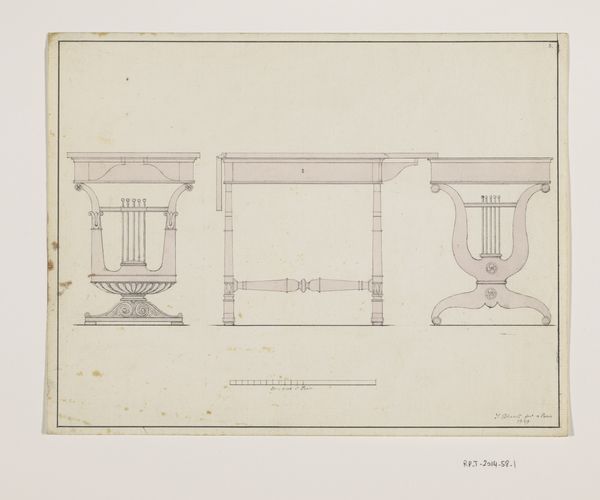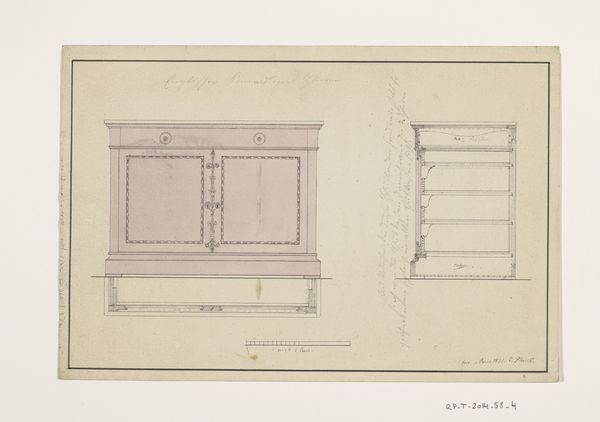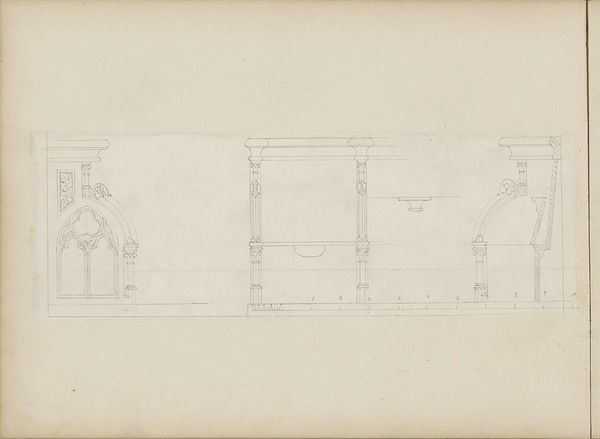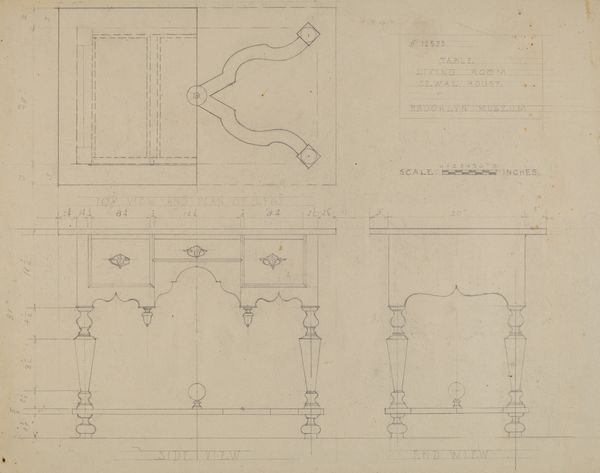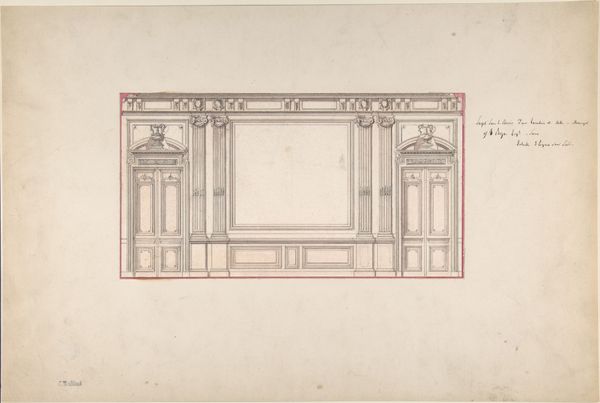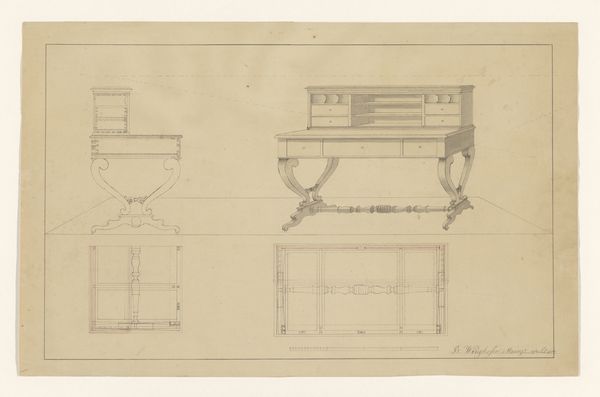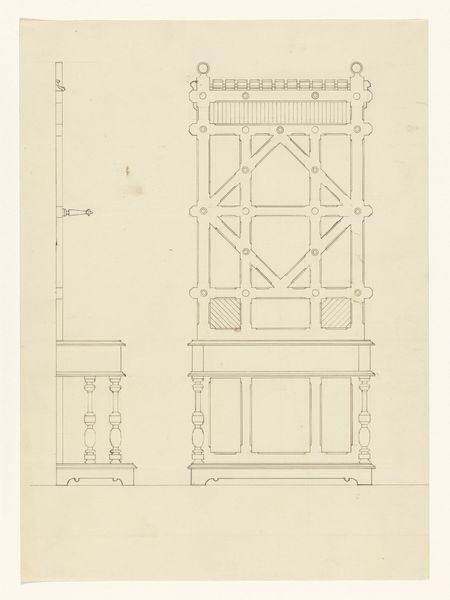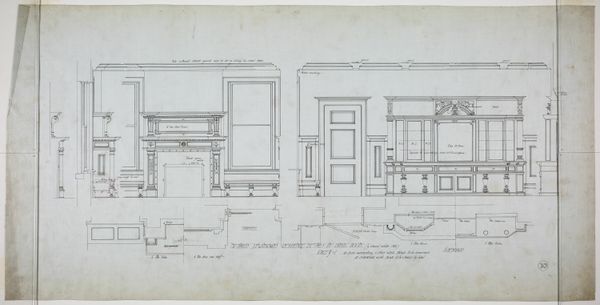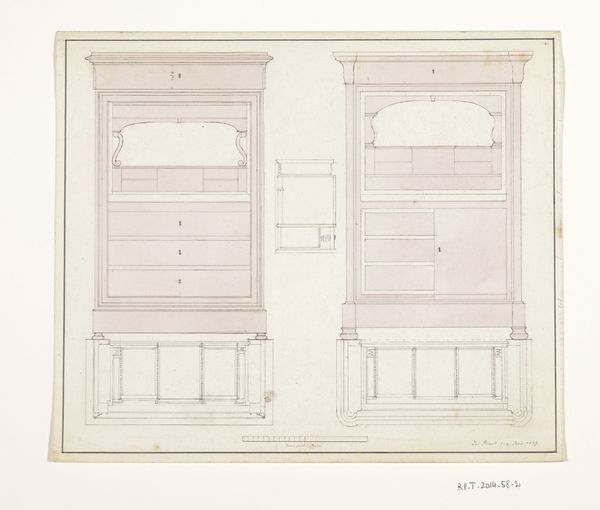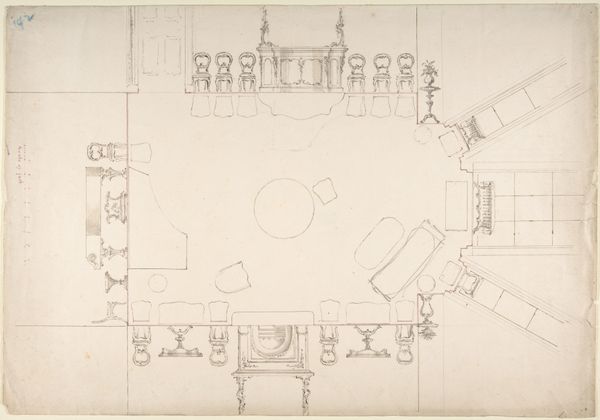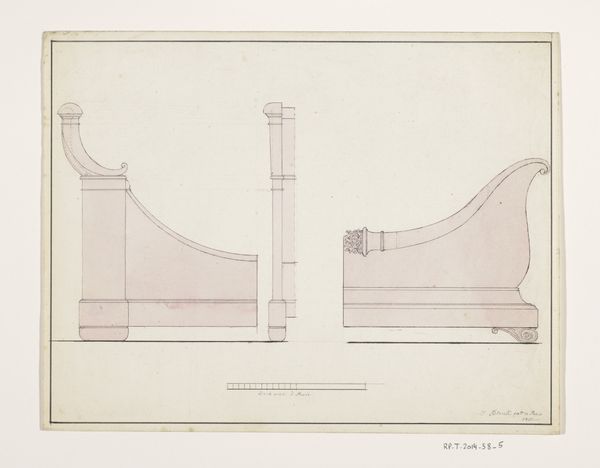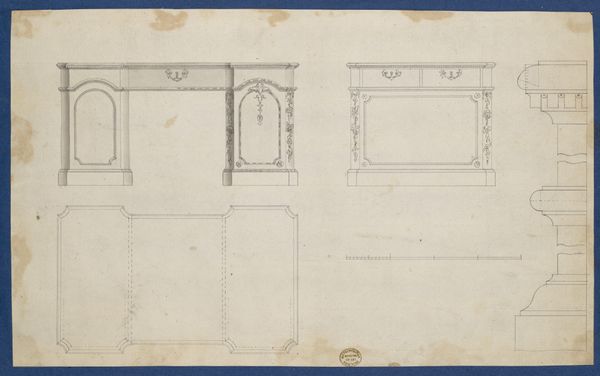
drawing, paper, pen, architecture
#
drawing
#
neoclacissism
#
paper
#
form
#
geometric
#
line
#
pen
#
academic-art
#
architecture
Dimensions: height 218 mm, width 282 mm
Copyright: Rijks Museum: Open Domain
Curator: Welcome. Here we have "Ontwerpen voor consoletafels", Designs for Console Tables, rendered in 1831 by Joachim-Pierre Blank. It’s a pen drawing on paper. Editor: Striking. Even in its monochrome state, it exudes a certain confident formality. The symmetry is what immediately jumps out. Curator: Indeed, Blank masterfully employs principles deeply rooted in neoclassicism. Notice the geometric shapes. The line work is so precise. It's a pristine example of academic art. Editor: The neoclassicism is definitely palpable, but when considering designs such as these, it is so important to think about them in their socio-political context, right? Who would these consoles be for? What sort of statements are they making? Curator: Certainly. These designs would fit well into spaces celebrating order, reason, and a revival of classical aesthetics—perhaps for an emerging bourgeoisie eager to signal status, through furniture design. The drawing exemplifies controlled harmony, reflective of its time. Editor: Considering Blank's choice of such symmetrical forms, these designs signal hierarchy, a controlling order within domestic spaces. The repetition also could be interpreted to promote specific narratives, even propagandistic ideals, but this is also reflective of gendered roles within those homes. Curator: Undoubtedly. Form serves function, of course, but also aspiration. Note the fine detailing—it serves as both structural articulation and ornament. Editor: Looking at these now, what strikes me is how these consoles served to uphold specific socio-economic structures in the 19th century and the gendered nature of domestic labor. That rigid symmetry doesn’t simply reflect form; it represents societal expectations. Curator: Perhaps we see how aesthetic preference became enmeshed with societal narratives, then. Editor: Precisely. It invites us to question the ideologies inherent to this particular design period. Curator: Thank you for joining me on this short journey through Joachim-Pierre Blank’s architectural sketch. The designs present a beautiful balance between intent, theory, and purpose. Editor: And let's also consider the roles that material objects can take, often perpetuating power structures beyond simple function. I hope this encourages us to think critically about the statements our spaces, and what we choose to put inside them, are making.
Comments
No comments
Be the first to comment and join the conversation on the ultimate creative platform.
